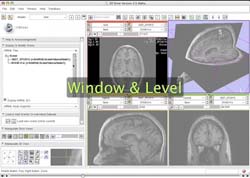Difference between revisions of "Projects:RegistrationDocumentation"
From NAMIC Wiki
| Line 31: | Line 31: | ||
---- | ---- | ||
| − | |||
| − | |||
| − | |||
| − | |||
| − | |||
| − | |||
| − | |||
| − | |||
| − | |||
| − | |||
| − | |||
| − | |||
| − | |||
| − | |||
| − | |||
| − | |||
| − | |||
| − | |||
== Links == | == Links == | ||
| Line 54: | Line 36: | ||
*Slicer Wiki: | *Slicer Wiki: | ||
*NAMIC registration | *NAMIC registration | ||
| − | * | + | *Contact: Dominik Meier : meier@bwh.harvard.edu |
Revision as of 22:01, 30 September 2009
Home < Projects:RegistrationDocumentationContents
Use Case Library
- this will contain a list of the most common scenarios encountered for Slicer Registration. Each case will contain a dataset, a parameter set, a guided tutorial with example result. The hierarchy will be represented graphically as a tree and as a list with links to the abovementioned data. The library will be as exhaustive as possible, containin brain and non-brain, different modalities (MRI, CT, PET/SPECT).
- considered is also a list of troubleshooting cases, i.e. a list of the most common sources of registration failure, again complete with dataset, tutorial and remedy.
Reference Manual
- This will contain detailed descriptions of each parameter and each control element within the slicer registration module. The description should help the user understand what exactly that function/parameter does and if/how useful it will be for their specific registration problem
- Preferred formats: Slicer Wiki, maybe PDF
User Manuals
- this documentation will discussing the main registration module functionality as a whole, focusing not on the individual controls but the main workflow.
formats: Slicer Wiki, PowerPoint.
- Also included in this category are Background Tutorials, explaining the basics of registration, formats: PowerPoint. Minimal understanding of the inner workings of a registration optimization algorithm is essential to understand and judge the results obtained and obtainable.
Training Video Tutorials
- These movies contain step by step instructions, running through each of the use-cases described above.
- An example of the features/character of a video tutorial is here: Media:VideoTutorialDemo_v1_0.mov
- video tutorials have become a popular and widespread form to document GUI interactions, particularly tutorials
- they can have almost the quality of direct tutoring
- they are compact in length and filesize (because the changes are local and small over time, MPEG compression is very effective with little quality loss), which makes them ideal for online distribution
- movie viewing capability is mainstream, i.e. all OS will have this capability, viewers can be downloaded for free
- the audio track can provide main instructions, motivation, commentary and an abundance of detail information at the right juncture, something very difficult to provide in other formats without overloading a tutorial
- the step by step interaction is captured unambiguously. We do not spend a lot of time and space in showing slides with screen captures.
- since they are easy to make and great software is inexpensive, potential use even for developer communication can be considered, e.g. to document complex bugs
- they have a low usage threshold, i.e. users are more inclined to watch a video than to dig through a power point presentation
- they are not all that useful for reference or main documentation material, e.g. a tutorial on main registration concepts is probably still better in PPT.
- formats: video files (quicktime, WMV, mp4 , Flash), optimized for streaming or download
Ideas for Developent Efforts
- This will contain lists on function improvements that require develoment effort, e.g. new GUI features, but also strategic notes on data and algorithm structure
- direct links to Reference Manual from Widget tooltips?
Links
- Developer efforts (Kitware): Projects:RegistrationImprovement
- Slicer Wiki:
- NAMIC registration
- Contact: Dominik Meier : meier@bwh.harvard.edu
